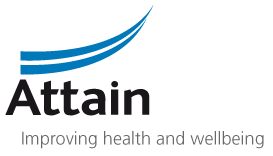Winter is here, sending us for our forgotten pullovers and mugs of our favourite hot drinks. But is the NHS ready?
In many hospitals this year the pressure typically seen in winter has barely abated before we will be back in the grip of seasonal surges in acutely medically patients. Last year as winter was rapidly closing in, Attain were asked to support a hospital through winter, as they found themselves with 66 less beds and no additional plans. Our focus was on patient flow and establishing a regular beat of daily activities that move patients along their care pathway.
Within the pressure cooker of winter management, we learnt the importance of:
- Rallying the troops
- Ensuring everyone knows the daily business plan and their role within it
- Timely communication and escalation across the system
- Focusing on better, not perfect
- Leaders standing side by side with teams
Let’s explore these further….
Rallying the troops
Dictating top down plans is not going to work to rapidly achieve improvements. Once a reflective mirror is held up, formed from qualitative and quantitative analysis, the clinical teams will have the answers to improve flow. We found that engaging with the clinical staff was made possible by embedding a feeling of hope. With senior leaders acting as Chief Story Telling officers repeating the call to action and narrative spoken in the board room to the clinical leaders and teams, a desire to act was stirred.
Our structured approach was integral in eliciting possible ideas from the teams and co designing these up into clear implementable options. A lack of ideas was not a problem once we had found the key to engagement.
Ensuring everyone knows the daily business plan and their role within it
Healthcare is a complex machine. Each cog is vital for the machine to deliver patient flow. Our experience is that, particularly in under pressure services, the different cogs function independently. Flow is too often seen as a management function and discussed away from where care is delivered. Each member of a team should understand what is required to achieve patient flow in their area and across the hospital. This may be the number of patients assessed, treated, stepped down or discharged and beds turned around.
‘Huddles’ are a great way to ensure teams understand what is required and how each individual contributes to the team target. Furthermore, if business intelligence technology is able to give real time feedback on delivering the daily business targets, this will bring greater clarity.
Timely communication and escalation across the system
Knowing your daily business targets is fundamental to achieving flow. Having the earliest possible indication that flow is at risk or stuttering is vital to being more proactive in managing a hospital site and a healthcare system. To achieve this requires honesty and transparency from teams and their leaders to hold their hands up when they are struggling to meet the demand. Simply knowing your peers who are leading the teams up or downstream today can spark a different conversation and a different level of cooperation tomorrow!
Co-created solutions can achieve more than throwing the grenade over the wall and hoping for a result! Our experience is that colleagues across the system want to help but sometimes they need to know what the ‘ask’ actually is.
Focusing on better, not perfect
The creative design stage is always energised and fun. When the focus turns to actions with go-live dates the palpitations in the room and subtle delaying tactics are obvious and something we have experienced many times! Planning will only take you part of the way. With complex systems you only find out if an idea will work by trying. Looking for the perfect solution will absolutely kill change. A question to ask is “will we reduce risk with this change?” Or “will we remove an identified issue with this change?”
Use the NHS change methodology involving regular cycles of plan, do, study and act to give a support structure for the teams. We found that giving regular touchpoints to all staff, gave them the confidence to move forward and try new things at pace. Our first initiative went live in 4 weeks!
Leaders standing side by side with teams
Managing flow in winter is tough. This winter a perfect storm is predicted to make it even harder. Staff need to know that senior leaders understand what is feels like on the front line. They want to be heard and feel supported. We started by ensuring clinical teams could present their ideas for change to system leaders. An opportunity to look them in the eye and get real buy-in and support! The power of being seen on the frontline should not be underestimated.
We saw the commitment of teams to keep going and keep trying different approaches being boosted as leaders began to regularly walkabout on the ‘shop floor’. When a team knows you have their back so much more can be achieved.
As winter transitioned to spring the elective plan had been delivered and the Chief Operating Office reflected on our work:
“We have survived winter (and improved performance most months!) and had 33 less beds this year than last. You have been key to us achieving this.”
The hospital is still far from being a panacea for flow. There is still room for improvement in culture, business management and communication. However, our experience illustrated that improvement is always possible.
For support with your plans, click here to contact us.

